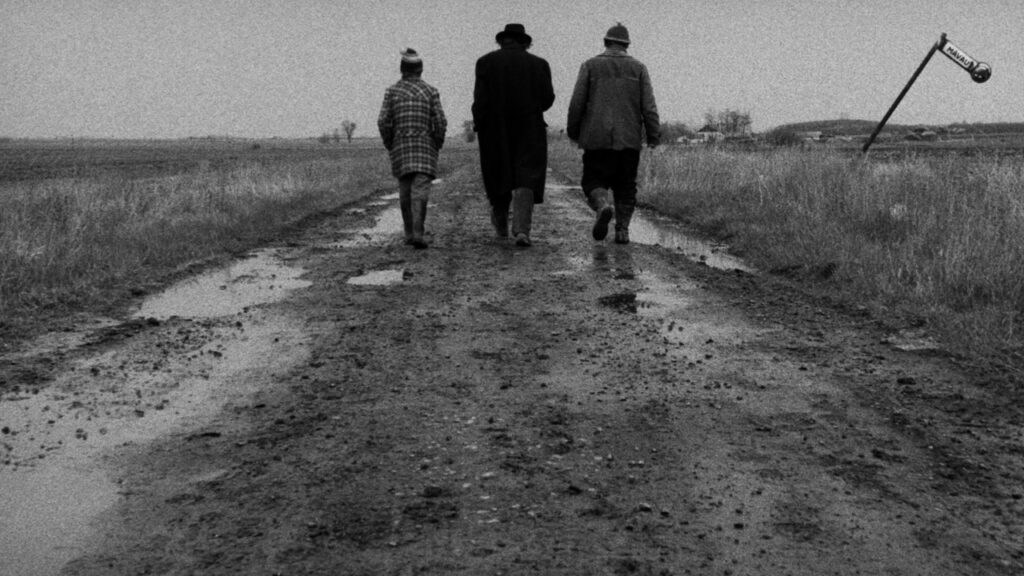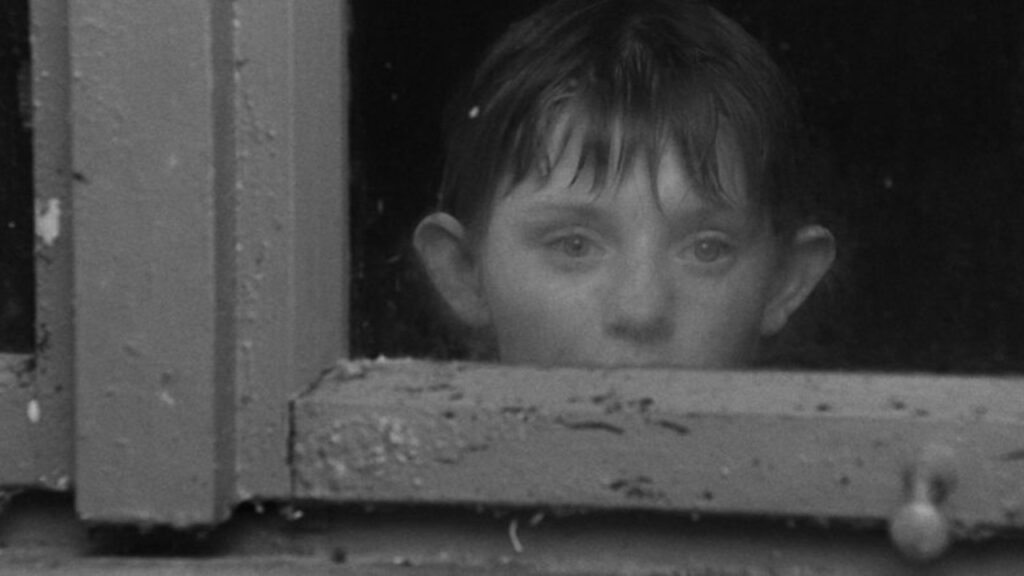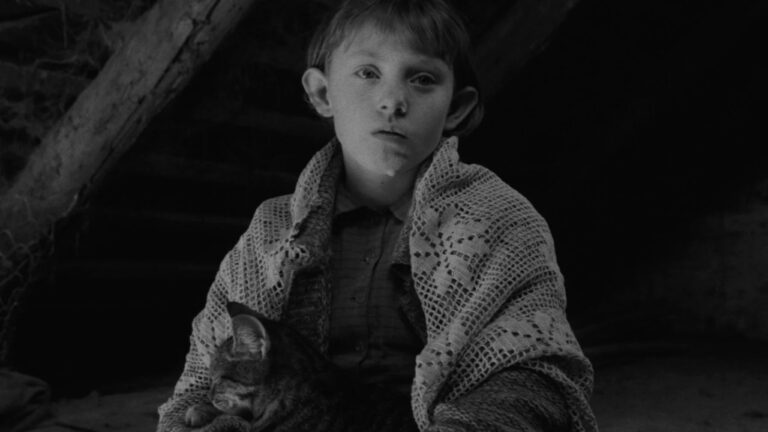Béla Tarr’s 1994 ‘Satantango,’ is a film that defies conventional cinema, both in form and in narrative. Running over seven hours, this Hungarian black-and-white epic immerses viewers in the slow, relentless rhythm of a decaying village, where hope is fleeting, human greed runs unchecked, and time itself seems suspended.
Adapted from László Krasznahorkai’s 1985 novel, Tarr’s film captures the bleak reality of post-Communist Hungary while simultaneously exploring universal themes of moral decay and human folly.
Béla Tarr Crafted a Transfixing Study of Morality and Despair

The film’s narrative unfolds in a small, desolate village, where the inhabitants are caught in endless cycles of despair and manipulation. When Irimiás, who everyone thought was long gone and dead, returns, the villagers see him as a mysterious stranger, and they soon perceive him as a savior promising wealth and change. However, he is a con man, exploiting their desperation and illustrating the recurring theme of false hope. Alongside him, Petrina manipulates others with equal cunning, highlighting the vulnerability and moral weakness of the villagers. Through this, Tarr examines how individuals cling to illusions, even when those illusions are harmful or self-serving.
One of the film’s most distinctive elements is its form and style. Tarr employs extraordinarily long takes, some lasting seven to ten minutes, creating a transfixing, immersive rhythm. These tracking shots glide over mud-soaked roads, crumbling buildings, and rain-drenched fields, often following characters in real time. The result is a cinematic experience that demands patience and rewards observation, encouraging viewers to notice subtle gestures, shifts in expression, and the weight of silence. The black-and-white cinematography further enhances the starkness and monotony of village life, while Mihály Víg’s repetitive, haunting score underscores the cyclical nature of the narrative.
The film is structured in 12 parts, moving forward and backward in time like a tango, which is a dance form that reflects between hope and despair, action and inaction, sin and consequence. Sequences like the cruel treatment of a girl and her cat, the obsessive, drunk doctor writing endless notes, or the villagers’ frantic scrambling for promised payouts reveal the pervasive moral ambiguity and human cruelty in this decaying world. Tarr does not shy away from discomfort; instead, he uses it to heighten the film’s realism and philosophical depth.
A Unique Blend of Formal Audacity and Thematic Depth

What sets Satantango apart is its ability to merge formal audacity with profound thematic exploration. It is both a study of human nature and a reflection on the collapse of social and political systems. The villagers’ continual failures, betrayals, and fleeting victories reflect life’s cyclical patterns, prompting viewers to ponder the persistent futility and repetition of human existence.
Watching Satantango is not a conventional cinematic experience; it requires patience, attention, and emotional endurance. Still, for those patient enough to surrender to its languid, fascinating flow, the film offers a rich and rewarding experience.
Béla Tarr’s work is a masterclass in the art of long-form storytelling, demonstrating that cinema can bend time and illuminate. It is a Challenging, entrancing, and unforgettable experience, because Satantango leaves a lasting impression, compelling reflection on the passage of time, moral ambiguity, and life’s inescapable rhythms.




